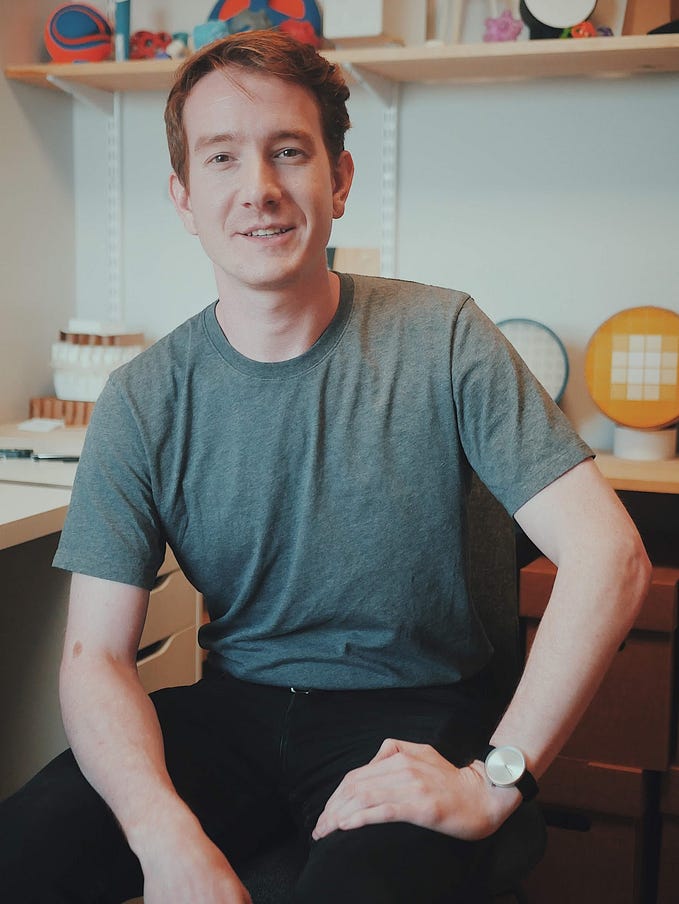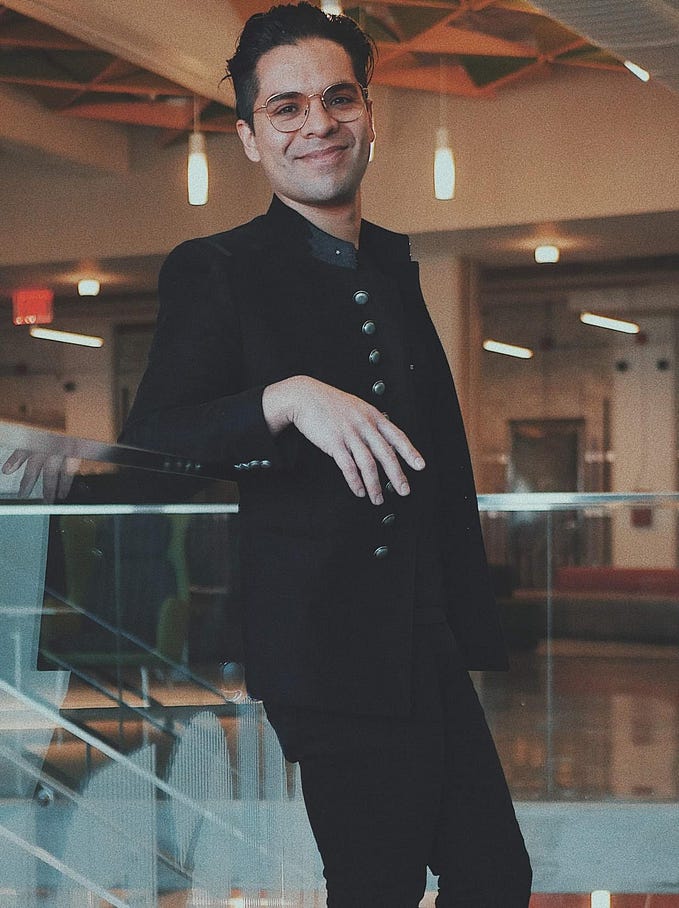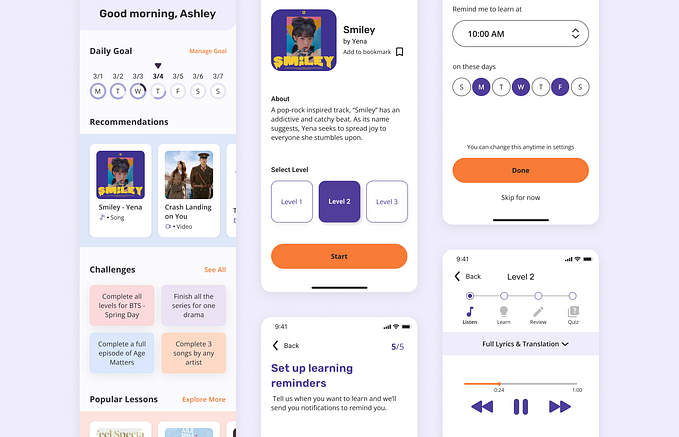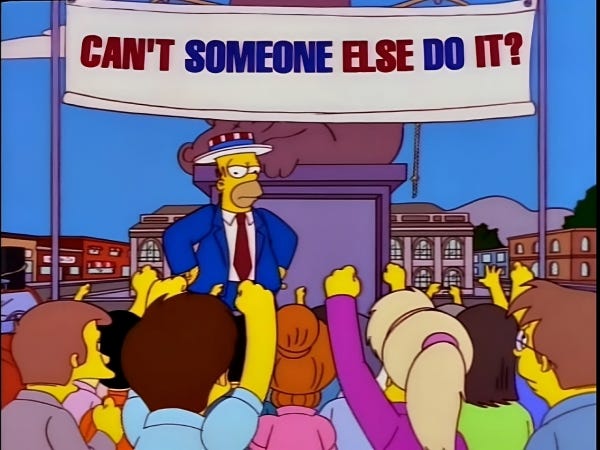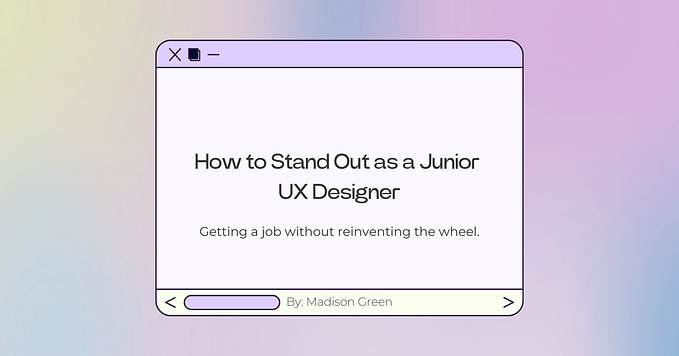Interview with Kathleen Namgung, Product Designer at Spotify

Kathleen and I met for the first time over video chat after having a conversation on LinkedIn. She is kind, thoughtful, and passionate about design.
Kathleen was born in Seoul, Korea and lived there until the end of first grade. She later moved to New Jersey and went to college at the University of Pittsburgh, where she was a psychology major with a fine arts minor.
Before joining Spotify, Kathleen worked at an agency called SJR and freelanced with different clients.
She currently lives in Brooklyn with her two rabbits Jubi and Leo. You can find Kathleen on LinkedIn and Instagram and you can also follow her rabbits @kathleensbabies.
If you have any questions relating to this interview or want to say hi, feel free to DM me on Instagram or reach out on LinkedIn!
How did you get into UX design?
I went into undergrad assuming I would pursue dentistry because my parents had wanted me to, but I also didn’t really know what I was passionate about then. Two years of preparing to apply to dental school, which involved assisting at a lab and shadowing a dentist, helped me realize that I wanted something else.
Around the time I had that realization, I came across a UX design portfolio on Instagram where somebody just happened to share their work and was fascinated that a profession in the creative industry could also be so research driven and multi-dimensional. By the end of that week, I made the decision to become a designer myself. Since Pitt didn’t offer any design classes, I started to build my portfolio by attending hackathons and personal case studies. I also changed my major from chemistry to psychology since it seemed like the closest UX related degree option that my school offered. I kept my career transition a secret from my parents for over a semester until a submission that I had contributed at HackPrinceton the following semester was featured as a top project. By that point, I felt like I had enough to prove to my parents that I was sure that this is what I wanted to pursue.
Do you have a design philosophy?
I think that good design comes in all shapes and forms. I used to put a lot of pressure on myself to follow an “ideal process” until understanding that uniqueness should be appreciated. Now I embrace flexibility and try my best to stay open minded to different strategies and plans for each challenge.
What do you think makes a great designer?
I’m always impressed when people are able to articulate design to those who aren’t designers. I think it comes with being able to understand problems comprehensively and with empathy — great designers are able to identify the bigger picture through the perspective of their audience, whether it be a user, a stakeholder or a team member.
What do you think makes a bad designer?
Being narrow minded is limiting in any profession. As part of your growth, it’s important to lose the ego and attachment to a work in order to practice thinking outside of the box. Creativity is a muscle and requires exercise!
What has experience been as a product designer at Spotify?
I’m a long time music lover; I grew up playing a variety of instruments (piano, clarinet, organ, guitar) and singing in choirs/bands. I’m a designer on the team for Spotify for Artists and being able to contribute to work that supports music creators definitely makes this a dream job.
There is also an emphasis for good design culture such as encouraging networking (global offsite events), refining ways of working (we recently made the switch to Figma and we’re loving it!), and prioritizing core principles — you can find out more at spotify.design.
How do you see UX evolving in the future?
I think that the general idea of user centric thinking is going to be the norm. The principle of human centered approach provides benefit across the board, in that roles outside of design will start to adapt it into their strategy as well. I can see our positions as designers becoming more collaborative and our job descriptions (right now there’s still some distinction between UI and UX when it’s all part of the same experience) becoming more blended because skill sets that are unique to design will increase in value.
What are the most common mistakes you see in UX portfolios?
The most common mistakes I see in UX portfolios are a lack of narrative in the work. A lot of portfolios are so keen on showing the result of a perfect design process and they don’t illustrate the thought behind the decisions. It feels very robotic when you say we did A-B-C-D to get this outcome; storytelling is a critical skill in design — people want to hear the journey of how you came to this decision in your own voice.
Do you have any tips for anyone looking to get into the UX field?
Being passionate and knowing what drives you can go a long way. Companies and brand names don’t define a designer’s abilities and everyone’s journey is different so focusing on passionately growing your skill can help in staying grounded when things don’t happen according to plan.
Do you have any side projects you’re working on?
I’ve been super inspired by digital artists (most recently @seerlight) so I’ve been illustrating more lately. My goal this quarantine is to refine my illustration style — you can check out some work on my Instagram.
What traits do you think the best leaders have?
Empathy has been a common trait in all of my favorite managers so far. Treating team members as people really goes a long way.


